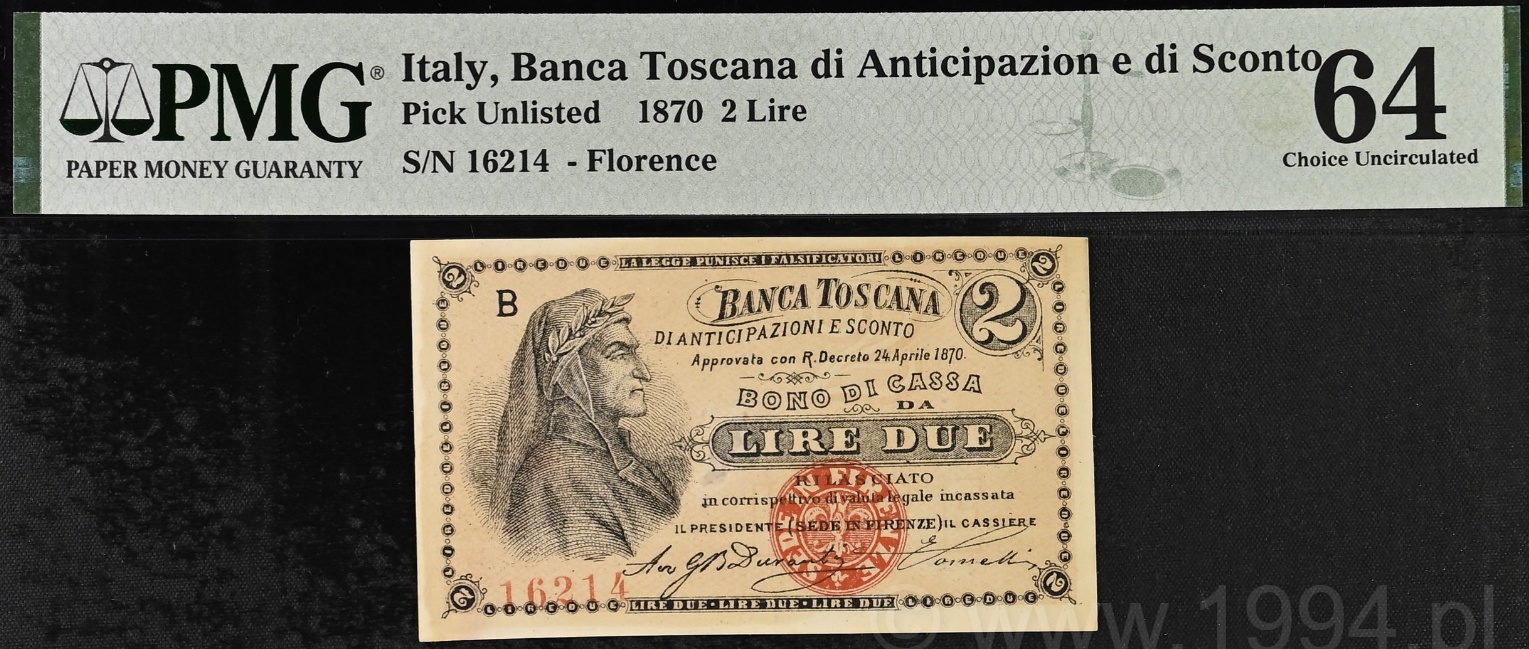Description and research notes
Florentine two‑lire "Bono di Cassa" authorized by Royal Decree of 24 April 1870 for the Banca Toscana di Anticipazioni e di Sconto. The face shows Dante Alighieri at left, a boldly engraved LIRE DUE tablet at center, and a red circular control seal of Florence—typical of Tuscan bank instruments immediately after unification.
These cashier’s notes formed the short‑term liquidity layer of Italy’s regional banking scene in the 1860s–1870s, sitting between coin and larger banknotes. They were meant to circulate locally and be redeemed at the issuing bank’s counter, which is why most survivors are heavily used or cancelled. Unlisted in Pick, the type documents how private banks bridged payments before national note‑issuing policy consolidated in the late 19th century.
PMG 64 Choice Uncirculated indicates crisp, original paper with strong printing in the text, seal, and guilloches—exceptional preservation for a private, merchant‑grade instrument.
